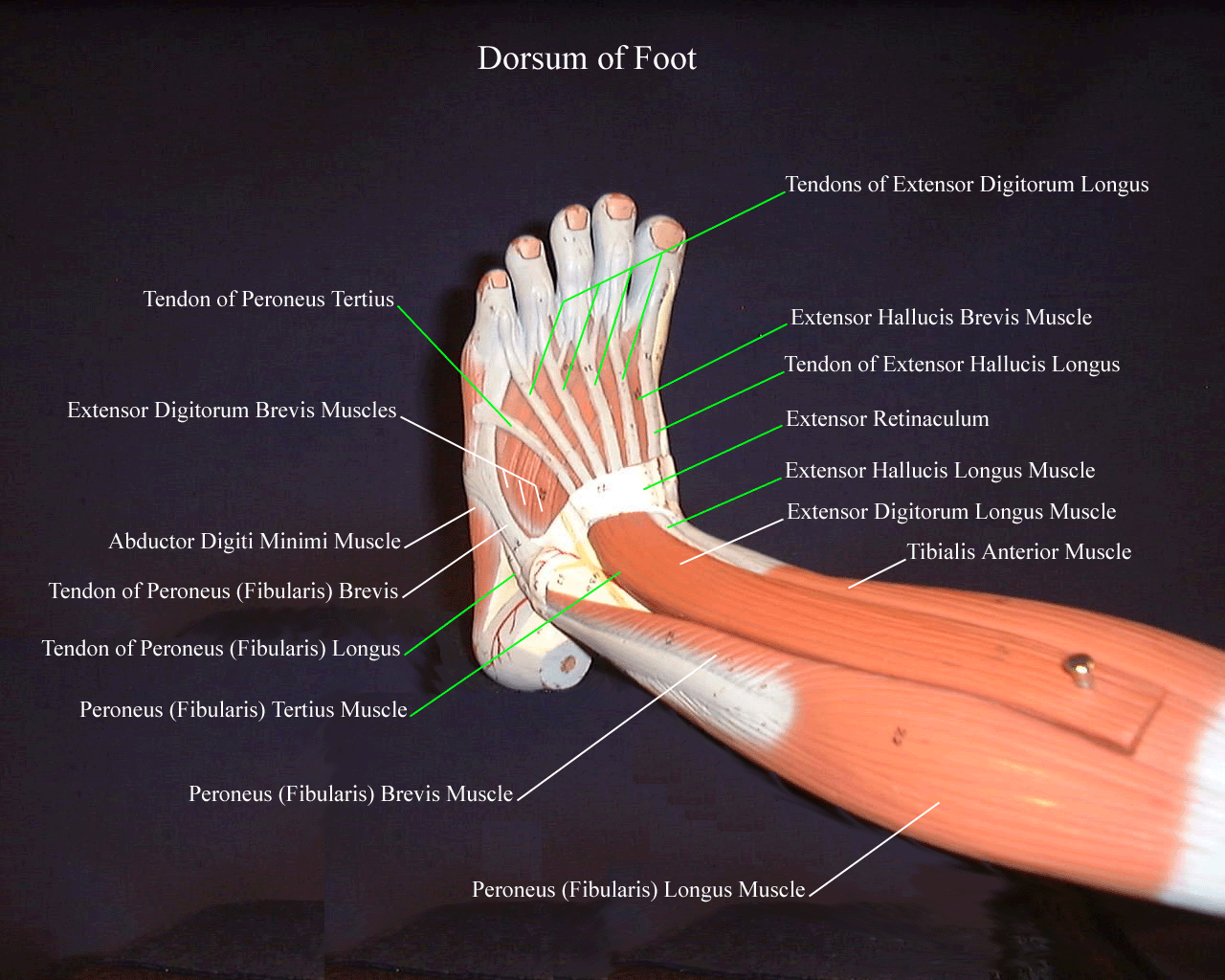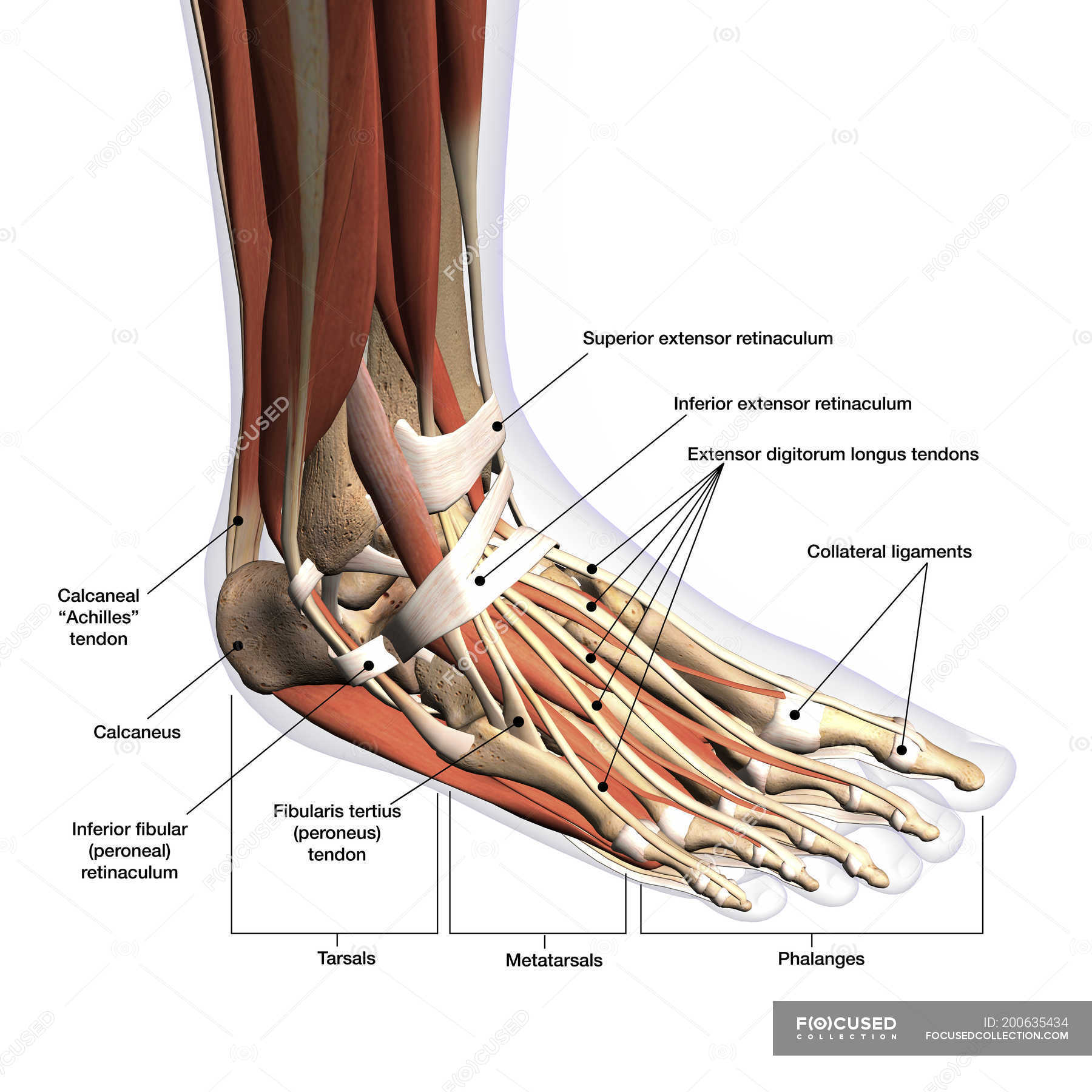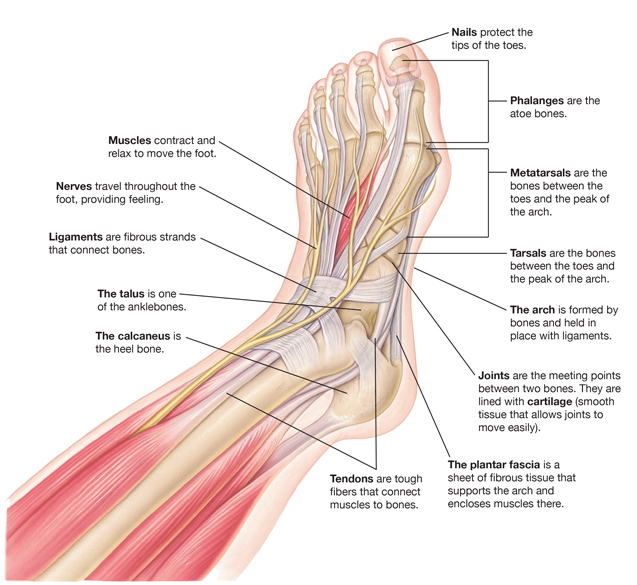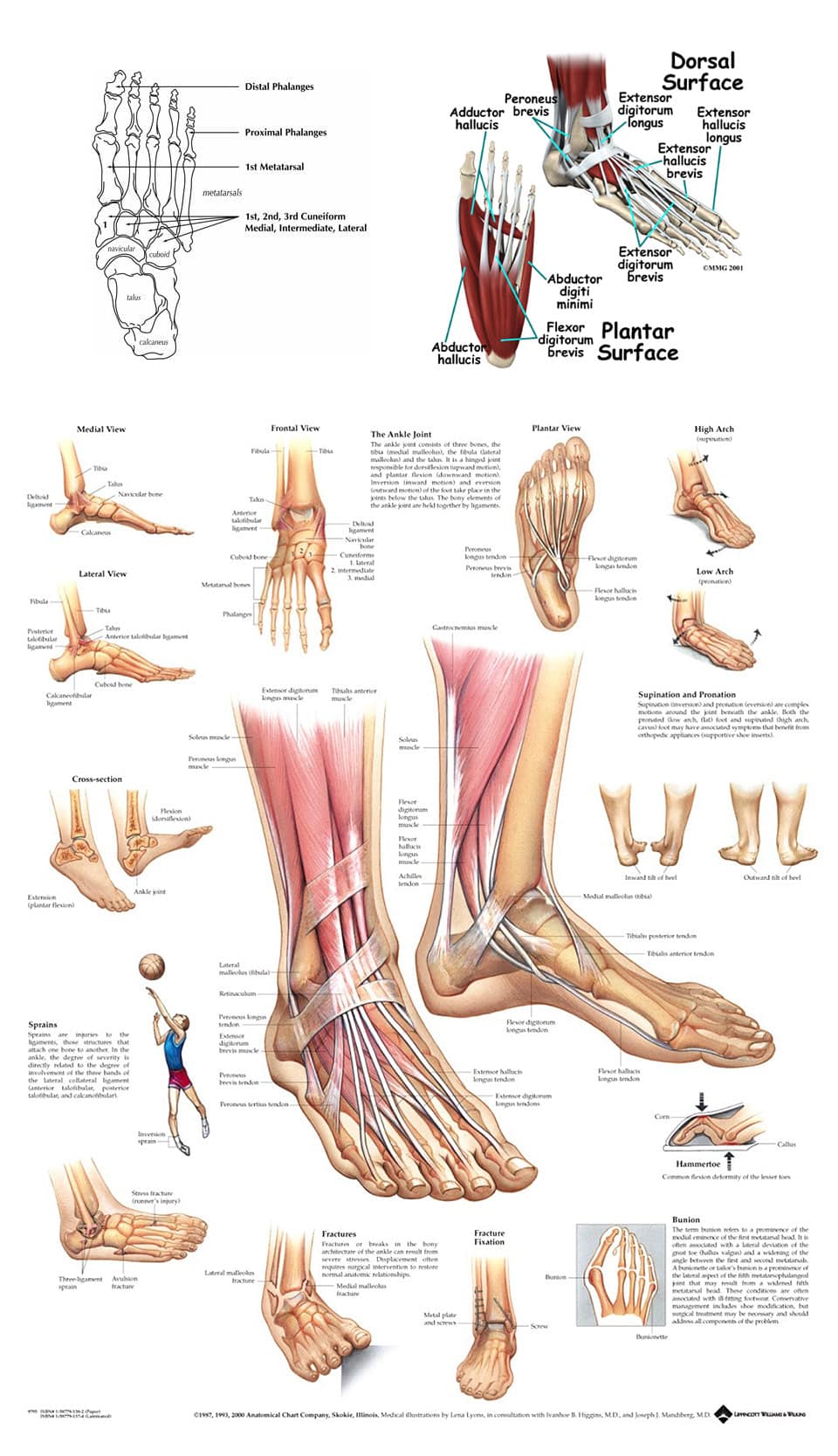
The 19 Muscles Of The Foot / The muscles of the foot Stock Image F001/4573 / The
It is made up of over 100 moving parts - bones, muscles, tendons, and ligaments designed to allow the foot to balance the body's weight on just two legs and support such diverse actions as running, jumping, climbing, and walking. Because they are so complicated, human feet can be especially prone to injury.

Foot & Ankle Bones
The foot ( pl.: feet) is an anatomical structure found in many vertebrates. It is the terminal portion of a limb which bears weight and allows locomotion. In many animals with feet, the foot is a separate [clarification needed] organ at the terminal part of the leg made up of one or more segments or bones, generally including claws and/or nails.

Anatomy of human foot with labels on white background — ankle, leg Stock Photo 200635434
The foot is the region of the body distal to the leg that is involved in weight bearing and locomotion. It consists of 28 bones, which can be divided functionally into three groups, referred to as the tarsus, metatarsus and phalanges. The foot is not only complicated in terms of the number and structure of bones, but also in terms of its joints.

Foot Anatomy 101 A Quick Lesson From a New Hampshire Podiatrist Nagy Footcare
The foot contains a lot of moving parts - 26 bones, 33 joints and over 100 ligaments. The foot is divided into three sections - the forefoot, the midfoot and the hindfoot. The forefoot This consists of five long bones (metatarsal bones) and five shorter bones that form the base of the toes (phalanges).

Foot Description, Drawings, Bones, & Facts Britannica
The foot can be divided into two main parts - the sole or plantar region, which is the part of the foot contacting the ground, and the dorsum of the foot or the dorsal region, which is the part directed superiorly.

Parts of a Foot
These bones are arranged in two rows, proximal and distal. The bones in the proximal row form the hindfoot, while those in the distal row from the midfoot. Hindfoot. Talus. Calcaneus. The talus connects the foot to the rest of the leg and body through articulations with the tibia and fibula, the two long bones in the lower leg. Midfoot. Navicular.

Muscle Anatomy Of The Plantar Foot Everything You Need To Know Dr. Nabil Ebraheim YouTube
Dr. Ebraheim's educational animated video describes anatomical structures of the foot and ankle, The Bony Anatomy, The Joints, Ligaments, and the Compartment.

Anatomy of the Foot and Ankle Foot and Ankle Diagram Anatomy of the Foot
The foot is a complex structure comprised of over 26 bones, 30 joints, numerous tendons, ligaments, and muscles responsible for our ability to stand upright, supporting the weight of the entire body and provides the base for the mechanism for bipedal gait. The foot corresponds to the portion of the lower extremity distal to the ankle and divides into hind, mid and forefoot. The articular.

Foot & Ankle Bones
26 bones 33 joints more than 100 muscles, tendons, and ligaments Bones of the foot The bones in the foot make up nearly 25% of the total bones in the body, and they help the foot withstand.

Chart of FOOT Dorsal view with parts name Vector image Stock Vector Image & Art Alamy
The ankle bone is composed of three bones: the tibia, the fibula, and the talus. The tibia and fibula are the bones of the lower leg, and the talus is the bone of the foot that sits on top of the ankle joint. The ankle joint is a hinge joint that allows for dorsiflexion (bending up) and plantarflexion (bending down) of the foot. Sesamoid Bones

Loading... Human anatomy chart, Foot anatomy, Nerve anatomy
The foot is one of the most complex parts of the body. It consists of 28 bones connected by many joints, muscles, tendons, and ligaments. The foot is prone to many types of injuries. Foot pain and problems can cause pain and inflammation, limiting movement. Muscles contract and relax to move the foot.

Anatomy of the Foot and Ankle OrthoPaedia
The bones of the foot are organized into rows named tarsal bones, metatarsal bones, and phalanges. These make up the toes and broad section of the feet. The other bones of the foot that create.

Understanding the Foot and Ankle 1004 Anatomical Parts & Charts
There are a variety of anatomical structures that make up the anatomy of the foot and ankle (Figure 1) including bones, joints, ligaments, muscles, tendons, and nerves. These will be reviewed in the sections of this chapter. Figure 1: Bones of the Foot and Ankle Regions of the Foot

Anatomy of the Foot and Ankle Astoria Foot and Ankle Surgery
Fig 1 - The dorsal layer of foot muscles. Plantar Aspect There are ten intrinsic muscles located in the plantar aspect (sole) of the foot. They act collectively to stabilise the arches of the foot and individually to control movement of the digits. They are innervated by the medial or lateral plantar nerves - which are branches of the tibial nerve.

The bones in the foot inferior view (Picture illustrated from Thieme Atlas of Anatomy General
Foot Anatomy . There are many parts of the foot and all have important jobs. Each foot has 26 bones, over 30 joints, and more than 100 muscles, ligaments, and tendons. These structures work together to carry out two main functions: Bearing weight; Forward movement (propulsion)

Notes on Anatomy and Physiology Using Imagery to Relax the Weight
It is made up of three joints: upper ankle joint (tibiotarsal), talocalcaneonavicular, and subtalar joints. The last two together are called the lower ankle joint. The upper ankle joint is formed by the inferior surfaces of tibia and fibula, and the superior surface of talus.